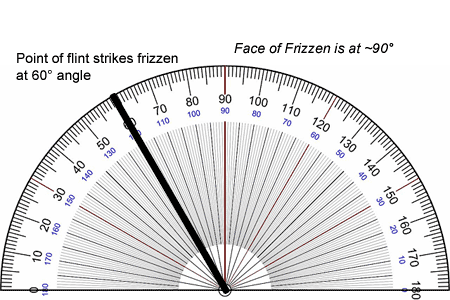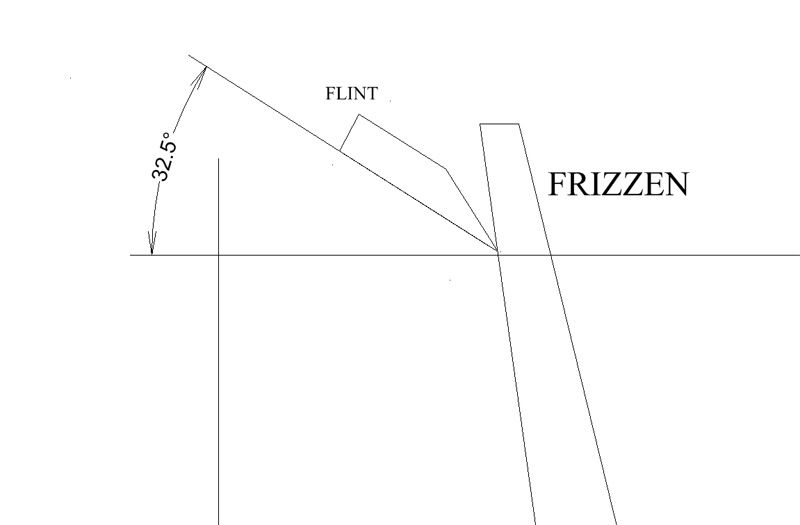Hi Zonie,
That's the angle I've set my flint since Paul Vallandigham (sp?) mentioned it back in about 2004. Made a monster of a difference for me. I typically get 100+ shots out of a flint and might have to knap it once during that time. Usually I just have to keep cleaning off the underside of the flint because it is self-knapping at that angle and powder fouling on the underside of the flint is more of a problem than anything else.
If you go beyond that 60° angle, it will knock large concentric chunks from the bottom of the flint. If that happens to you, your angle is too steep - make it wider (lower angle)
No if's, ands, buts or maybe's! I've been doing it that way since Paul first mentioned it here on the forum and it made all the difference in the world. And I did a lot of firing using that geometry because I was doing a lot of reenactments where I would use 30 to 40 cartridges for each battle reenactment. We typically had two afternoon scripted public battles and one tactical battle (unscripted) on the morning of one of the two days. Not that much reenactment here in Washington but lots when I lived both in Vermont and Virginia.
I think I see a point of confusion that was pointed out to me by one of our forum members, rdstrain49. The point of contact is where the zero line actually is. The zero line would be a horizontal line that extends horizontally parallel to the pan from that point of contact.
Twisted_1in66 :thumbsup:
Dan






